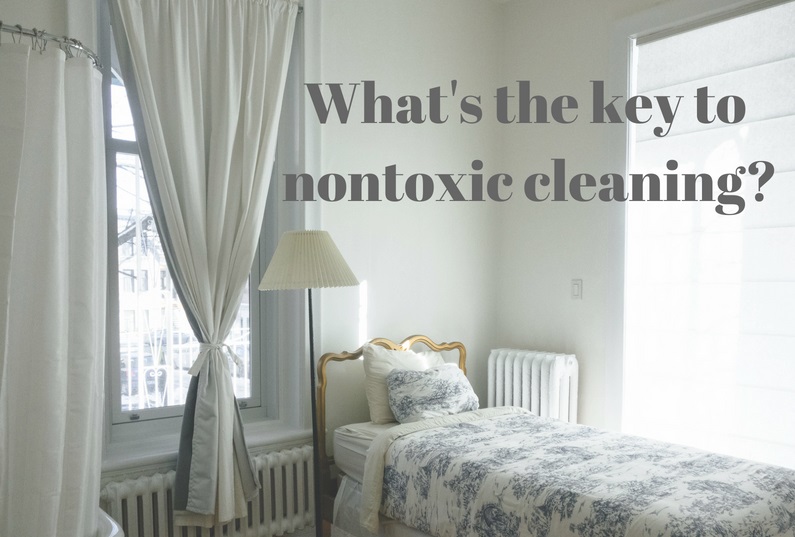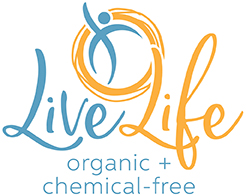
When I ask people “what is nontoxic cleaning to you,” the answer I hear most is “avoiding chemicals.”
While it’s with good intention, avoidance won’t help much.
U.S. labeling and trade secret laws don’t require all ingredients to be labeled. Combined with knowing there are thousands of chemicals that have been tested and harmful to health, and that these chemicals can have two or more names makes label checking a daunting and exhausting task.
Who the heck wants to feel daunting and exhausted? I’m gonna go out on a big sturdy limb and say, no one.
Even more powerful, is knowing what to look FOR.
Focusing on what TO do also creates a positive shift in thinking!
Not to mention the affects it may have to feel better physically, breathe easier, and have peace of mind knowing you and your family aren’t exposed to toxic cleaners.
Nontoxic, all the way, baby!
What does “nontoxic” cleaners mean?
“Nontoxic” has no common definition applied by companies. People and companies use the term nontoxic but have different criteria for what it means.
Here’s how we, at Occupant Wellness, define nontoxic…
As being among the products, processes and services that have the least toxic impact on human health. We’re looking for natural, organic, and chemical-free all around.
Here’s what we take into consideration:
- What’s in the product. What is the product made of? This includes ingredients, material, fibers, binders, fillers, and securing materials.
- What’s on the product. What types of dyes, colorant, finishes, and coatings have been added or included.
- What’s around the product. What types of packaging, environment, other products, and processes has the product been exposed to?
- How will the indoor environment be affected? How the cleaning processes will impact the overall indoor environment and indoor air quality. How it will affect people living or working in the space being cleaned.
How to choose nontoxic cleaners.
We want you to have the best products and processes, so we approach “nontoxic” with the utmost all-around concern for your health.
Here’s what to look for:
1. Ingredients. Cleaning supplies often involve cleaners (powder or liquid) that we buy or make ourselves. There are lots of DIY recipes out there, some of which call for ingredients that are harmful to health.
When choosing cleaning ingredients, look for natural time-tested ingredients such as baking soda, vinegar, nontoxic soap, and hydrogen peroxide. Be sure that the hydrogen peroxide is 3% vs. food grade strength of 10%. If you’re a DIYer, be sure to understand which of these ingredients work well together and which do not, and which natural ingredients give off volatile organic compounds (VOCs) that can be harmful to health.
Prefer to grab a bottle off the shelf or order online? Check out the EWG Guide to Healthy Cleaning and look for top rated products.
2. Types of materials. Materials in the case of cleaning include tools such as rags, mops, vacuums and buckets. Many of these tools are made of oil byproducts, which inherently are made of chemicals.
Choose tools made of organic cotton or metal. Rags and mops with natural dyes and free of finishes are the best nontoxic options.
3. What’s around the products. Have your cleaning tools been used to vacuum up construction dust or clean an exceptionally dirty surface? Clean the cleaning tool or replace it. Replace vacuum bags, filters and wipe down the unit itself. Replace cleaning rags and mops with one that is clean. There’s no sense in putting in the time and effort to clean, only to leave a mess behind.
4. Indoor environment. Cleaning kicks up dust and dirt. Minimize the amount of dust kicked up by using damp tools (rags, mops, etc) to clean. After cleaning floors and flat hard surfaces, wash drapes, bedding and other soft surface items to get rid of dust that may have kicked up and clung to those surfaces.
Summary
Look for the best nontoxic cleaning products, made of natural, organic and chemical-free ingredients and materials. Consider how your cleaning tools have been used in the past. Will they add dust and dirt back into your home? If so, consider cleaning or replacing them prior to cleaning your home. Clean in a way that minimizes kick-up of dust and dirt by using damp cleaning tool such as organic cotton rags and washing soft-surface items (bedding, clothing, drapes) after the bulk of cleaning is finished. Breathe easier, feel better, and have peace of mind knowing you and your loved ones are choosing the best healthy products.
